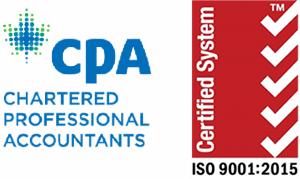One of the key factors in determining the success of a company is the ratio of managers to direct reports. According to the Harvard Business Review, an experienced manager can handle a team of between five and nine direct reports, while Inc. suggests that the optimal number is seven. However, every business is different and the ideal number of direct reports for a manager will depend on the specific needs and goals of the company.
The ratio of managers to direct reports is important because it can impact a company’s ability to grow and evolve. Many businesses go through a series of stages as they develop, and the number of direct reports a manager can handle can influence whether or not a company is able to progress to the next stage. For example:
Stage 1: Doers (up to 9 employees)
In the first stage of a company’s development, the owner or manager may be responsible for a small team of employees who are responsible for executing tasks and following standard operating procedures. At this stage, it is important to have employees who are versatile and able to handle a variety of tasks. These employees may thrive on variety and enjoy the feeling of getting things done.
However, many owners or managers may struggle to move beyond this stage because they are reluctant to delegate responsibilities to their employees. They may fear that the work will not be done to the same standard if they are not directly overseeing it. To progress to the next stage, it is important for owners and managers to have the confidence to hire managers and delegate tasks to their team.
Stage 2: Managers (10-40 employees)
As a company grows, the owner or top manager may hire a small team of managers to oversee the work of their direct reports. These managers should have a strong understanding of the processes and procedures they are responsible for managing, and should be detail-oriented and able to stick to a plan. They may contribute to the development of the plan, but are typically not responsible for creating it.
However, many companies struggle to move beyond this stage because they do not have leaders in place who are able to create a vision and strategy for the company. To progress to the next stage, it is important to have managers who are able to take on more responsibility and learn new skills, such as communication and delegation.
Stage 3: Leaders (40+ employees)
In the third stage of a company’s development, it is important to have leaders in place who are able to manage multiple layers of management and guide their team towards achieving the company’s goals. A leader should be able to provide clear direction and a vision for their team to follow, and should have strong skills in communication, delegation, and strategy development.
While many managers may be able to take on leadership roles, it is not necessarily the case that all leaders are able to effectively manage their team. To successfully transition from stage 2 to stage 3, it may be necessary to either hire new leaders or train existing managers to become leaders. This process can be time-consuming and challenging, which is why many companies struggle to make this transition.
One example of a company that successfully made the transition from stage 2 to stage 3 is Acceleration Partners. Founded by Robert Glazer in 2007, Acceleration Partners is a partner marketing agency that helps brands develop and manage their relationships with influencers. As the company grew, Glazer recognized the need to hire managers and leaders to oversee the work of his team. He followed the principle of “outgrowing half your people and half your processes” as the company doubled in size, eventually building a team of leaders who were able to manage a group of managers and the employees they oversaw.
If you are struggling to move your company beyond stage 2 and into stage 3, it is worth considering whether you have the right people in place to take your business to the next level. It may be necessary to hire new leaders or train existing managers to become leaders in order to make the transition successfully. This process can be challenging, but it is essential for the long-term growth and success of your business.







